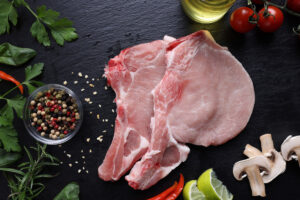
Purchasing prices for pork remained relatively stable at the beginning of June, at 92-94 UAH/ton, according to the Ukrainian Pig Farmers Association (ASU) based on the results of its weekly monitoring of purchasing prices.
“The first summer trades ended with stable quotations for most operators or a slight correction of 0.5-1 UAH/kg for some market players. Therefore, prices for live pigs this week mostly fluctuated within the range of 92-94 UAH/kg, although there were both higher and lower offers. The latter, in particular, concern the sale of animals in poor condition,” the analysts explained.
According to their information, thanks to positive price changes in the east and south, where the shortage of live cattle is more acute, the average market price stood at 92.8 UAH/kg, which is 0.3% higher than a week earlier.
At the same time, experts noted that the green holidays passed almost unnoticed for the meat market. Therefore, meat processors do not expect a surge in consumer activity in the near future. Some of them hope that improved weather conditions and the approaching holiday season will revive trade and prevent refusals/returns at the final stage of sales.
At the same time, processors are preparing for increased pressure from seasonal factors on pork supply. Although the feedback and mood of processing companies currently vary, most tend to believe that purchase prices at upcoming auctions will remain unchanged, as consistently low sales are offset by a modest supply of live pigs, the industry association concluded.
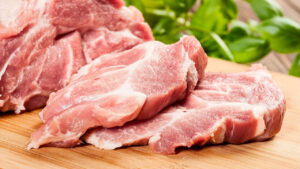
The market for slaughter pigs continues to stabilize and consolidate, with prices in the last days of May recorded at 92-93 UAH/kg, according to the Ukrainian Pig Farmers Association (ASU) based on the results of weekly monitoring of purchase prices.
“At the end of May, prices on the live pig market remained largely within the price range of the previous week — 92-93 UAH/kg. At the same time, the weighted average market price fell by 0.6% to 92.7 UAH/kg. This change was due to a revision of the maximum price offers on the market,” analysts explained.
According to their information, meat processing representatives report relative stability in wholesale and retail prices for pork. In recent weeks, operators have described trade as consistently sluggish and have also noted that demand for quality pork is in line with supply. Given this conditional market balance, most processors expect pork market prices to remain unchanged at the beginning of summer. At the same time, buyers note that the volume of live pigs on the market remains quite “restrained,” which forces them to maintain a larger than usual “purchasing radius” that is not limited to neighboring regions.
“A number of processors believe that with the improvement of weather conditions, prices on the live pig market may return to their previous levels,” the ASU concluded.
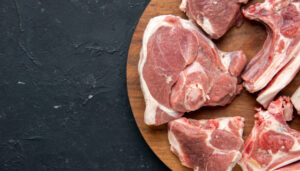
In February 2025, Ukraine imported 963 tons of pork, which is three times more than in January of this year, according to the Ukrainian Pig Association (UPA).
“The revival of import activity took place against the backdrop of an unconventional increase in purchase prices for the season. Instead, the average price of a kilogram of imported meat raw materials was lower than the minimum price level of last year, which was recorded in January – $1.89 per 1 kg and $1.92 per 1 kg at the end of winter,” analysts said.
According to their information, the products imported to Ukraine do not compete with Ukrainian pork, so imports still do not affect prices.
“Since the domestic supply of pork this year is less than the previous year, during the period of increased demand for meat in spring and summer, imports may increase, and the range of such products will be more diverse. For example, if prices in European markets, where we import the lion’s share of pork, decline while prices in Ukraine remain high, it will be economically justified to import cheaper raw materials. In this case, the pressure on the domestic market and its pricing from imports will increase, but we are not seeing this yet,” the industry association said.
Although February imports are the largest in the last 14 months, according to representatives of the meat industry, its presence on the market is still almost imperceptible, experts say.
In January and February 2025, pork exports remained at least 292 tons per month, so the total for the first two months amounted to 587.4 tons, or $1.6 million in monetary terms.
At the same time, the geography of foreign trade in Ukrainian pork remains limited. The main buyer countries for Ukrainian pork are Hong Kong, where 30% of external shipments were sent, the UAE – 22%, Malaysia and Georgia – 13% and 10%, respectively. The remaining Ukrainian pork was exported in small volumes to Bahrain, Liberia, and South Korea.
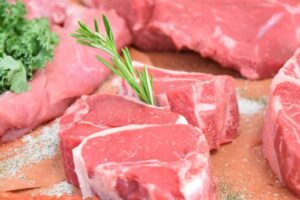
In January, Ukraine increased pork imports, the total volume of which exceeded foreign purchases in October-December 2024, the Pig Producers of Ukraine (PUA) association reported, citing preliminary customs statistics.
“During the first month of the year, Ukraine imported about 323 tons of pork, which is more than twice the total volume of products imported in October-December last year, as well as in January 2024. Although there has been a revival in import activity, the import flow is not so active as to significantly affect the domestic market,” the industry association noted.
The analysts drew attention to the fact that the increased interest of Ukrainian meat market players in imported raw materials has led to an increase in domestic pork prices.
“The average purchase price of slaughterhouse pigs in January increased by 5.5% compared to December, which is an atypical price behavior for the winter period, as it was the market’s response to a decrease in domestic supply. European pork prices, on the other hand, continued their typical seasonal decline. Therefore, although the average customs value of a kilogram of imported pork was higher than it was recorded last year ($2.84 vs. $2.52 per kg excluding VAT on average in 2024), a number of meat processing enterprises took the opportunity to optimize raw material costs in this way,” the experts noted.
They reminded that imports of pork have historically played a role of leverage on domestic prices, but currently its volumes do not put pressure on quotations, as most meat processors do not currently feel the inflow of imported raw materials.
Exports of pig meat in January were slightly lower than imports, amounting to 295 tons. In addition to the main sales markets (UAE, Hong Kong, Malaysia, Liberia), pork supplies to Georgia resumed at the beginning of the year, the USBA stated.
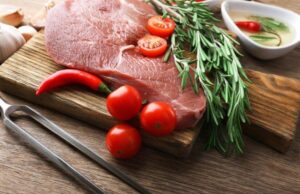
In January-October 2024, Ukraine exported 2.5 thousand tons of chilled and frozen pig meat, and imported 2.1 thousand tons, imports are likely to fall to a record low, the Pig Producers of Ukraine (PUA) industry association reported, citing data from the State Customs Service.
“Given the minimal presence of imported pork on the market (less than 1% of the total capacity), this year the meat industry is most focused on domestic products. At the same time, the low activity of external pork supplies “hints” that this year may set a new record low in terms of imports, breaking the previous one – 5.2 thousand tons, which was recorded in 2018,” analysts said.
The USBA highly appreciated the growth of pork supplies to foreign markets, which in January-October exceeded 2.5 thousand tons and brought $ 6 million, which is higher than the cost of importing pork by $ 780 thousand.
Analysts predict that Ukraine will be able to finish 2024 as a net exporter, albeit by a small margin.
According to the USBA, the limited geography of foreign trade prevents more tangible export achievements. For example, 75% of Ukrainian pork is exported to the UAE, while the rest in small volumes is exported to Bahrain, Malaysia, Liberia, Hong Kong, and Angola.
As reported, the State Service of Ukraine for Food Safety and Consumer Protection is negotiating bilateral veterinary certificates required for foreign trade with a number of countries, including South Korea, Malaysia, Singapore, Vietnam, etc.
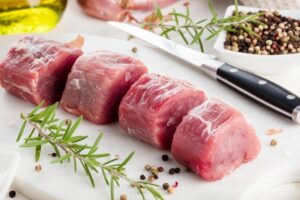
Prices for the purchase of slaughter pigs in the third decade of September continued to recover, according to the Pig Producers of Ukraine industry association.
“Last week’s trading ended with a noticeable strengthening of prices for the purchase of live pork: most industrial pig farms “signed” commodity lots by 3-5.5 UAH/kg more expensive than a week earlier. Thus, the main volumes of live pork this week were purchased at 61-63 UAH/kg, although in some places quotations fluctuated by 1 UAH/kg both up and down. The weighted average market price amounted to 61.76 UAH/kg (+9.7% compared to last week), analysts said.
According to representatives of meat processing, the course of pork sales remains relatively stable, without any particular jerks or recessions. At the same time, some procurers say that the supply of conditioned pork is lower than they would like, so in some places there is a shortage of it. This is also confirmed by feedback from pork producers, who are increasingly interested in cooperation from former or new contractors, as well as requests for additional volumes.
“The operators of the live pork market currently see no prerequisites for lowering prices, but rather at least strengthening at the current level or increasing them to 65 UAH/kg,” the industry association summarized.